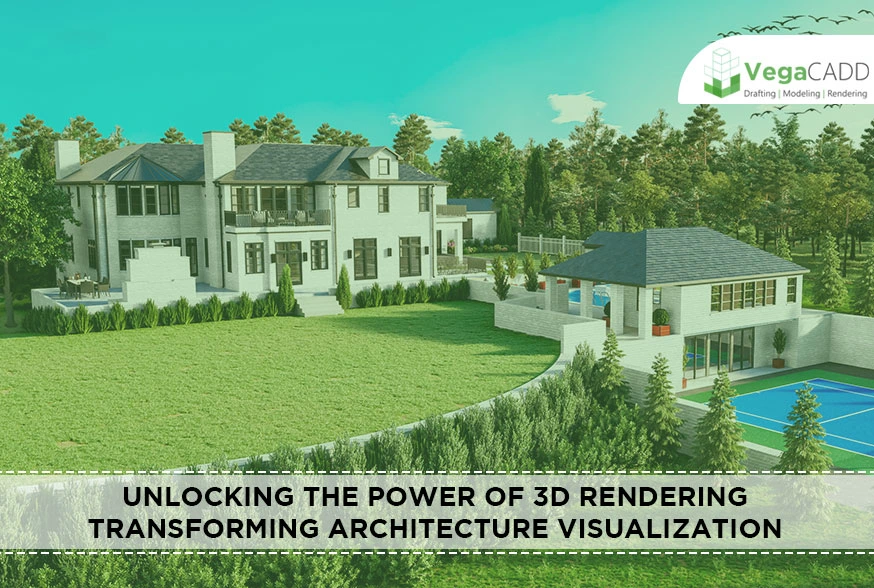Unleashing the potential of 3D rendering technology is transforming the world of architectural visualization. In recent years, architectural 3D rendering has emerged as a cost-effective and time-efficient alternative to traditional photography. It has opened up a world of possibilities for 3D artists to turn any idea into a high-quality visual representation that can tell a compelling story. By adopting the latest trends in architectural design, 3D artists can create stunning visuals that captivate their clients and stand out from the crowd. Utilizing natural imperfections, such as slight asymmetry and texture variations, adds a sense of realism and uniqueness to 3D renders. Beautiful composition with a balanced distribution of visual weight, using the rule of thirds or the golden ratio, creates an engaging experience for the viewer. By unlocking the power of 3D visualization, brands, and designers can reduce costs and time-to-market and deliver an enhanced customer experience.

The Evolution of Architectural Visualization
Starting from primitive cave paintings and drawings, architects and artists have consistently strived to tell a story of space, light, and materiality that clients and the wider public can understand. From the ancient wonders of the world, such as the pyramids of Egypt and the awe-inspiring Notre-Dame de Paris, to the sophisticated designs of modern-day skyscrapers and homes, architectural visualization has been a critical design that bringing these projects to life. One major breakthrough was made in the Italian Renaissance with the discovery of linear perspective, allowing architects and artists to create realistic, three-dimensional images of their designs. Since then, the evolution has continued to push new boundaries as technological improvements in computer-aided design and 3D visualization techniques have revolutionized the way we create and communicate architectural ideas. This evolution will undoubtedly continue as architects and designers continue to push the boundaries of what is possible in architectural visualization.
Future Trends in 3D Rendering for Architecture
1. Increasing use of virtual reality (VR) in architectural design: In the coming years, VR will become even more common in architectural visualization. It provides clients with a realistic sense of how their proposed building will look and feel, allowing designers to make changes before construction even begins. It will also make collaboration between designers and clients easier and more efficient.
2. Greater use of advanced 3D software: The use of advanced 3D software will make architectural rendering faster and more realistic. Features such as light mixing and realistic textures will improve the accuracy of architectural visualization, giving clients a clearer vision of the proposed building. This will lead to greater precision in building design and a more satisfying experience for clients.
3. More advanced 3D printing: As the cost of 3D printers decreases, architects will have greater access to the technology. They will be able to quickly and efficiently print models of their designs, providing clients with a tangible and physical representation of the planned building. This will lead to a more accurate depiction of designs in three dimensions, allowing clients to better evaluate the design and make necessary changes.
4. Expansion of AI in architectural visualization: As Artificial Intelligence (AI) continues to develop, we can expect to see AI-assisted automated rendering. This will simplify the design process and make it easier for architects to create photorealistic renderings without spending hours on each detail. This will lead to quicker turnaround times, letting architects devote more time to creativity.
5. Integration with building management systems: With advancements in building management technology, it will become more important for architects to consider the integration of building management into their design process. They will need to consider how a building will be managed, how energy will be conserved, and other factors that will affect the efficiency of a building. This will lead to more advanced designs that take these factors into account.
Conclusion
In conclusion, 3D rendering is revolutionizing the architecture industry by providing a cost-effective and efficient alternative to traditional photography. By staying up-to-date with the latest design trends, embracing natural imperfections, and creating visually-stunning compositions, 3D artists can unlock the full power of architectural visualization and transform their clients' ideas into reality. NoTriangle, a premium 3D rendering service provider, offers a comprehensive range of solutions specifically tailored for the architecture and real estate industries, including immersive VR and AR experiences, architectural presentations, and pre-selling apartments, houses, and condos. With a team of highly skilled professionals who combine artistic vision with technical expertise, NoTriangle delivers exceptional quality, photorealistic renderings that showcase properties in their best light. Ultimately, unlocking the power of 3D rendering goes beyond just providing stunning visuals; it's about telling a compelling story that triggers positive emotions and inspires the imagination, leaving a lasting impact on the viewer.
Contact us here for 3D Rendering Services that transform your imagination into reality.